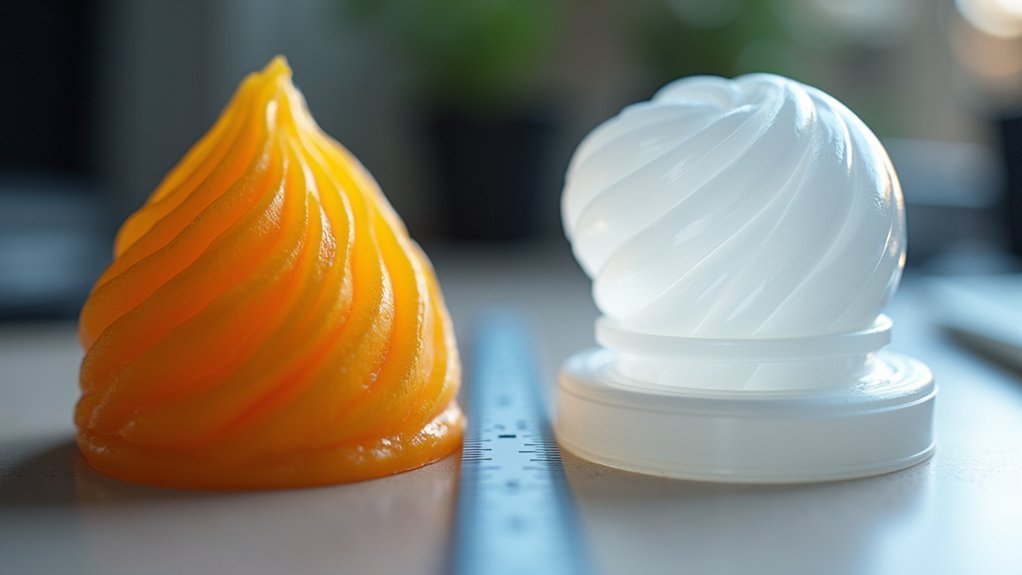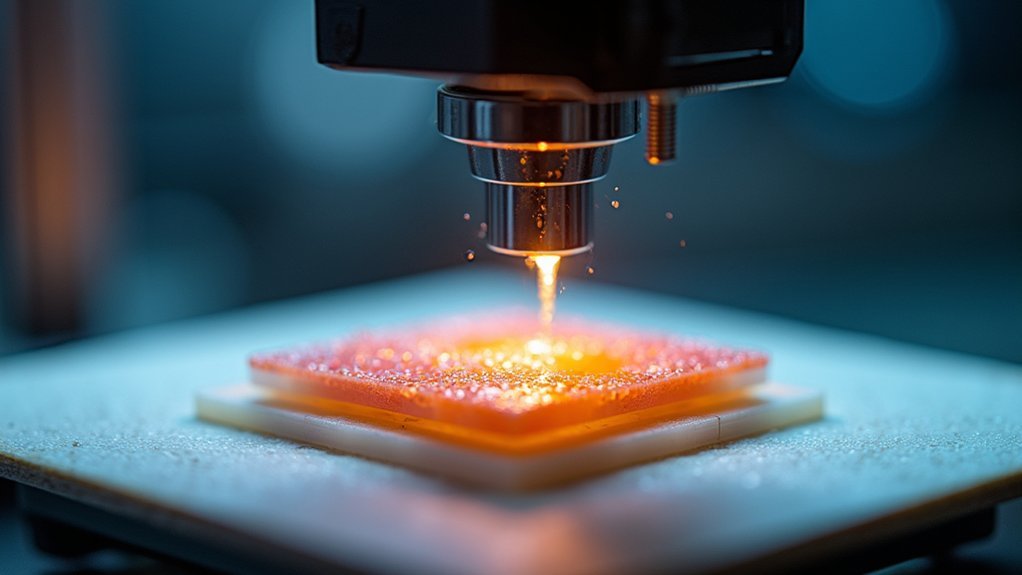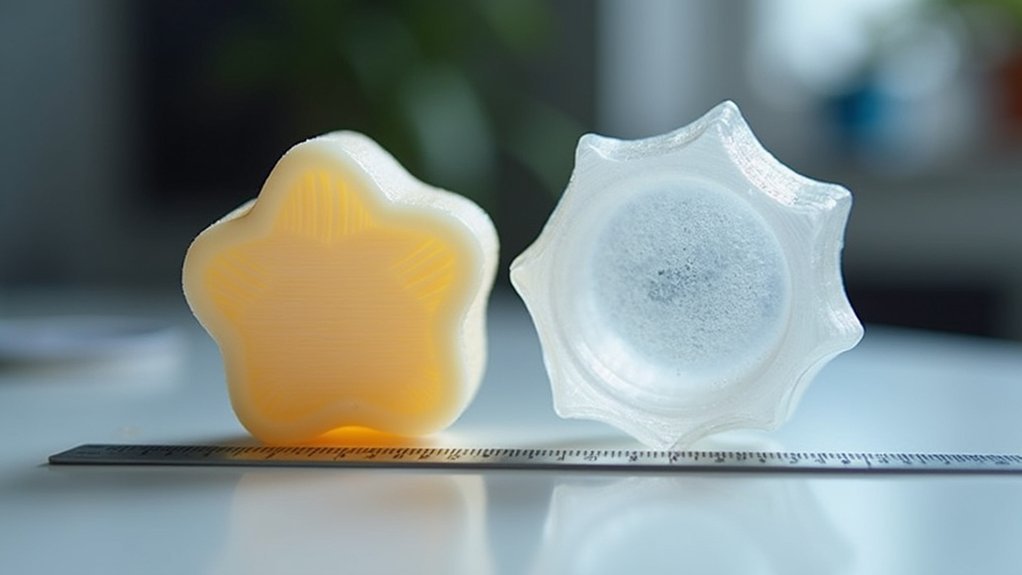You’ll need three key distance adjustments for clean PLA and PETG prints. Set retraction distance to 0.5-1mm for PLA and 1-2mm for PETG due to viscosity differences. Maintain nozzle-to-bed distance at 0.1-0.2mm, positioning PLA slightly closer while giving PETG more squish space. Optimize travel distances with retraction speeds of 40-60mm/s for PLA and 30-50mm/s for PETG. These precise calibrations will transform your print quality and reveal advanced techniques.
Optimal Retraction Distance Settings for PETG Vs PLA

When you’re dialing in retraction settings, PETG and PLA require distinctly different approaches due to their varying material properties.
For PETG, you’ll need a retraction distance of 1-2 mm to combat its higher viscosity and prevent stringing issues. PLA’s lower viscosity means you can achieve clean prints with just 0.5-1 mm retraction distance.
These printing materials behave differently at various temperatures. PETG benefits from reducing print temperature by 5-10°C below standard settings to minimize stringing.
PLA performs well within its typical temperature range of 200-220°C without additional adjustments.
Finding ideal settings requires testing in small increments since different brands vary considerably.
Remember that effective cooling enhances PLA’s performance, while PETG needs gentler cooling to maintain proper layer adhesion.
Fine-Tuning Nozzle-to-Bed Distance for Better Layer Adhesion
Since proper first layer adhesion determines your print’s success or failure, achieving the perfect nozzle-to-bed distance becomes critical for both PLA and PETG materials.
You’ll want to maintain 0.1-0.2 mm spacing for best results with either filament.
For successful bed leveling calibration:
- Use paper as a feeler gauge between nozzle and bed, providing slight resistance while moving freely
- Position PLA slightly closer to enhance adhesion, while PETG needs enough space to squish into bed surfaces
- Set your heated bed between 70-90°C for PETG to maintain consistent distance during printing temperature changes
You should recalibrate periodically, especially when switching filaments.
Even minor shifts impact your first layer quality, leading to poor adhesion and warping. Proper nozzle-to-bed distance prevents these issues and guarantees clean prints.
Adjusting Print Head Travel Distance to Eliminate Stringing

After establishing proper bed adhesion, you’ll need to tackle stringing issues that occur when your print head travels between different sections of your model.
Fine-tuning retraction distance is essential for clean prints—set PLA between 4-6mm and PETG between 5-10mm.
Optimize travel moves by adjusting retraction speeds to 40-60mm/s for PLA and 30-50mm/s for PETG.
Configure your Z-hop setting to lift the nozzle during travels, preventing filament dragging.
Lower print temperature by 5-10°C to reduce oozing during non-printing movements.
Set your cooling fan between 50-100% for PLA and 10-30% for PETG to improve print quality.
These adjustments work together to eliminate stringing and deliver superior results.
Frequently Asked Questions
How to Get the Cleanest 3D Print?
You’ll achieve the cleanest prints by maintaining ideal nozzle temperatures, using proper retraction settings, ensuring adequate bed adhesion, adjusting cooling fans correctly, and regularly cleaning your nozzle to prevent clogs.
Is PETG More Clear Than PLA?
You’ll find PETG offers superior clarity compared to PLA due to its chemical structure. PETG achieves glass-like transparency with proper printing settings, while PLA remains more opaque, making PETG better for clear applications.
What Is the Best Retraction Distance for PETG?
You’ll want to start with 1.0 mm retraction distance for PETG, then adjust between 0.5-2.0 mm based on your printer’s performance. Test small samples to find what eliminates stringing best.
How to Clean up PETG 3D Prints?
Use a heated nozzle at 250°C to soften PETG for easier removal. Trim excess material with a hobby knife, employ cleaning filament for purging, and store PETG in dry conditions.





Leave a Reply